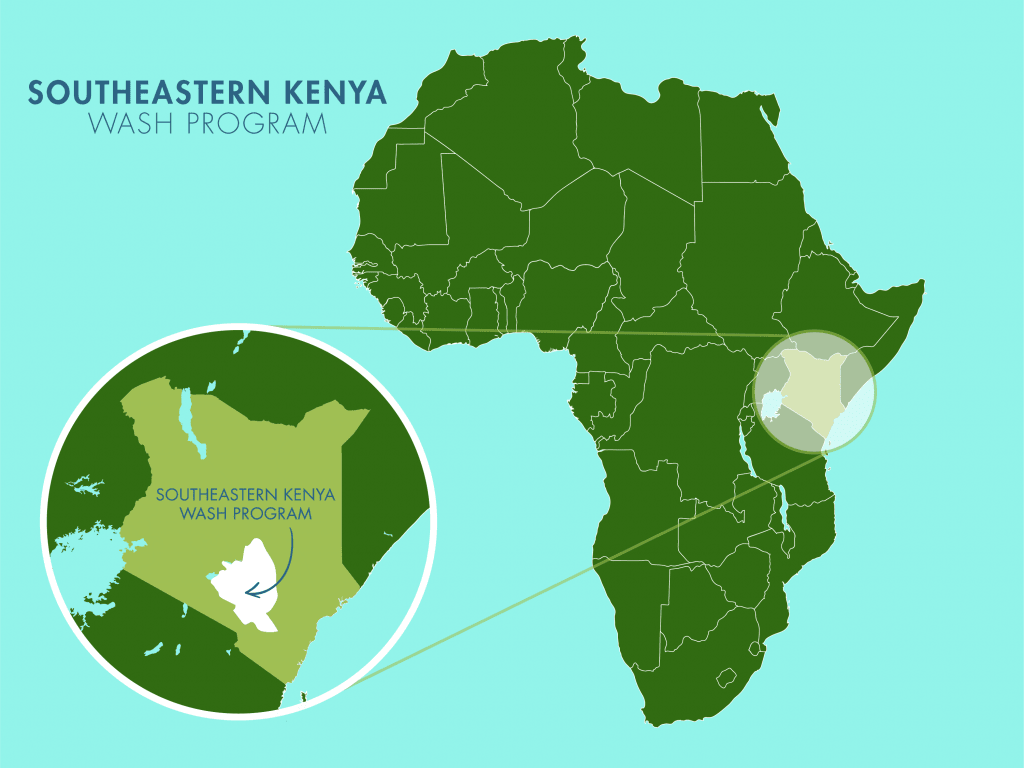At just 17 years old, Francis has spent most of his life walking for water, alongside the other 500 residents of Kiliku Community. Each day, he makes the long journey to the unprotected earth dam, the community’s only water source. The trip takes him two hours—a demanding and often discouraging task.

The route to the dam is rocky and uneven, winding through dusty paths and steep terrain. Sometimes he brings along a donkey to help carry heavy jerrycans, but even that doesn’t always make things easier.
“Fetching water takes [longer] than usual because it is located far away and sometimes when using a donkey, it becomes stubborn and throws the jerrycans making the process of fetching water wearisome and frustrating," said Francis.

Francis.
When asked what he would do if he didn’t have to spend so much time fetching water, Francis answers with both simplicity and longing: “I would be helping my parents at home by taking care of the goats, or I would interact with my friends.”
Instead of studying or playing with other children, Francis spends his evenings and school breaks collecting water. The impact has been heavy.
“Although I have finished school, I did not get impressive grades, mostly due to water scarcity issues. I would spend most of my evenings and holidays fetching water to take to school on the following day or for use at home; thus, I did not have time to focus on my studies," lamented Francis.

Francis prepares to haul his heavy jerrycan home, a two-hour journey.
The earth dam’s water is unprotected, dirty, and shared with animals. When the drought hits, it shrinks into a shallow pool of brownish water.
Francis explains the risks clearly: “The current water source is located far away, and the water, at times, dries up during extreme drought periods. The water is also unclean, and issues such as stomachaches and diarrhea are common in our area.”

He adds that water scarcity is not only exhausting—it’s emotionally draining: “It is because we receive very little [rainfall] in this region and the long periods of drought make the earth dam dry up faster. Living in these conditions is disheartening and feels punitive, but we have no option [other] than to hope for a better future because this is our home. I feel angry at the situation because fetching water is an exacting ordeal, and it is sad that we do not have any alternative.”

For Francis, the promise of a new protected dug well project brings a glimpse of hope and safety. It would mean clean water within a short distance, protected from contamination, and available even during drought.
“The waterpoint will provide enough clean water within a short distance, therefore, I will no longer be walking so far under the burning sun to fetch water. It will also be protected, preventing exposure to water-related infections," Francis shared.
This project could change his future.
With water nearby, Francis dreams of pursuing a career and helping his family thrive: “I hope that I can be in the hospitality industry so that I can support my siblings at home. Availability of water from the proposed project will enable me to support my family through farming because I will use my income to purchase farm inputs and other requirements.”
For young people like Francis, access to safe water means freedom; the chance to focus on education, pursue a career, and build a better life for their families.
The proposed water project in Kiliku Community will not only end the long walks and the fear of sickness; it will restore hope to a generation that has known only hardship.
Solving the water crisis in this community will require a multifaceted system that will work together to create a sustainable water source that will serve this community for years to come.
Steps Toward a Solution
Our technical experts worked with the local community to identify the most effective solution to their water crisis. Together, they decided to construct a protected dug well and sand dam.
Protected Dug Well Near A Sand Dam
Once a sand dam is installed and has time to mature by gathering sand and silt, groundwater increases significantly in the entire area surrounding the project. This provides a reliable source of groundwater that wasn’t possible before. As a result, wells can be constructed to take advantage of the water stored and filtered in the collected sand.
During the construction of the protected dug well, we will build a platform for the well and attach a hand pump. The community will gain a safe, enclosed water source capable of providing approximately five gallons of water per minute.
This protected dug well will be connected to a sand dam to obtain water.
Community Education & Ownership
Hygiene and sanitation training are integral to our water projects. Training is tailored to each community's specific needs and includes key topics such as proper water handling, improved hygiene practices, disease transmission prevention, and care of the new water point. Safe water and improved hygiene habits foster a healthier future for everyone in the community.
Encouraged and supported by our team's guidance, the community elects a water user committee representative of its diverse members. This committee assumes responsibility for maintaining the water point, organizing community efforts, and gathering fees to ensure its upkeep.

 Protected Dug Well
Protected Dug Well
 Rehabilitation Project
Rehabilitation Project
















